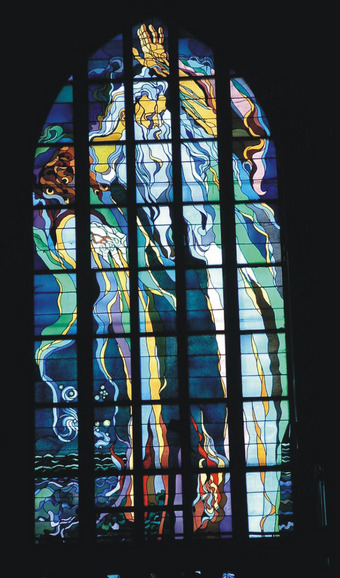January 27, 2010
Stanisław Wyspiański
Not much posting recently, partly because I've been busy and partly because all the posts I've tried to do recently just get bigger and bigger and I can't figure out how to tie them up into a coherent whole. This is one example and I've decided to just let it go, rambling and imperfect as it is. Maybe I'll hone it later, but for now, here it is -
When I first saw this image on Flickr a few months ago, I thought it was the work of some obscure artist from the 1970's or even more recent. I guess I was fooled by the fact that the faces are created with the leadlines, not with paint, something that is quite rare before the 1970's. It turns out this piece is from 1904 and is by Stanisław Wyspiański (1869 – 1907). The panel is called 'Apollo: the Copernican solar system' and it's located in the Medical Society House at 4 Radziwillowska street, Cracow, Poland.
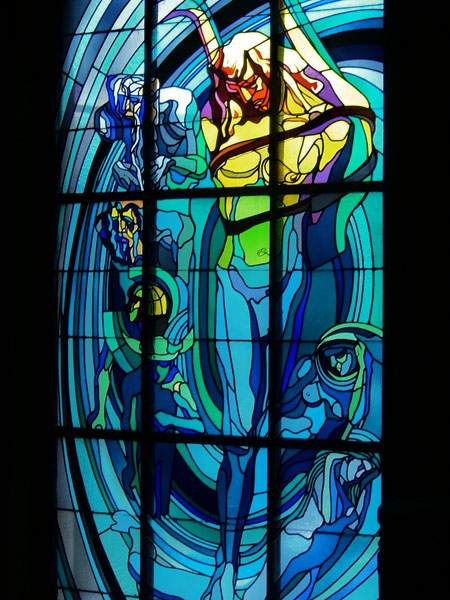
It also turns out that Wyspiański is an especially unique and interesting artist.
More below the fold....
Medical Society House, Kracow
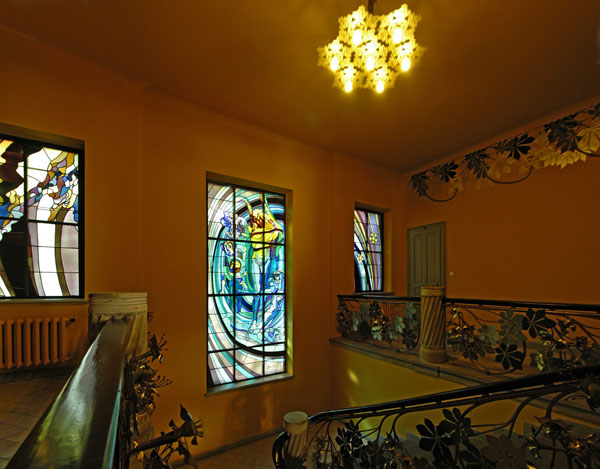
Interesting segment about the making of the Apollo panel.
Drawing for the Apollo Panel.
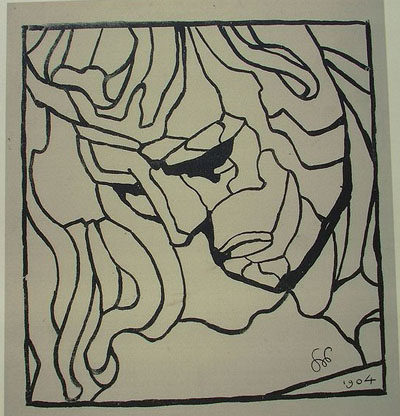
Playwright, Poet, Painter, and... Stained Glass Designer
Stanisław Wyspiański is best known in his native Cracow, Poland, as a playwright, and most well known for the 1901 play The Wedding. There is a movie version of the The Wedding on YouTube, though it's in Polish with no English subtitles.
These images are all Wikimedia Common files.
This looks to be a design for stained glass.
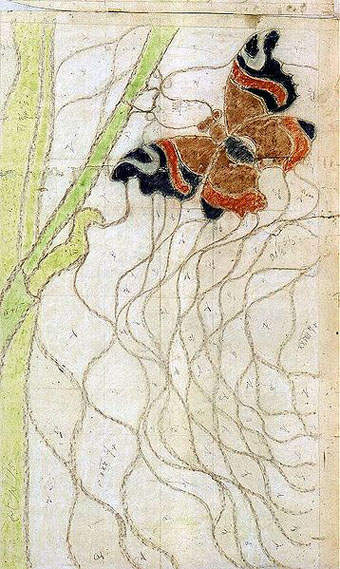
He did a number of self portraits.
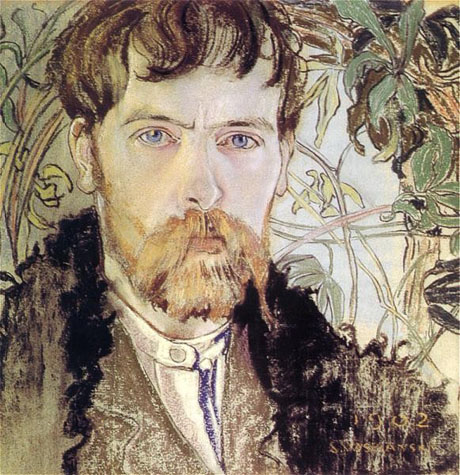
And family scenes
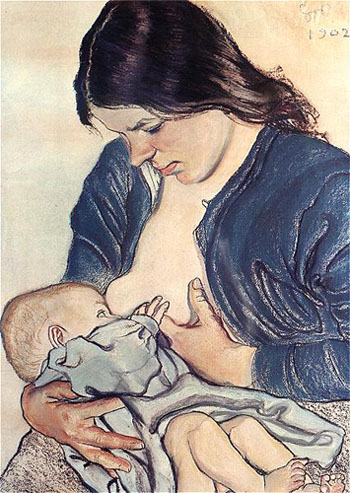
Illustration for a series on Heroic and mythical figures - this one of Agammenon and Menelaus, from The Iliad.
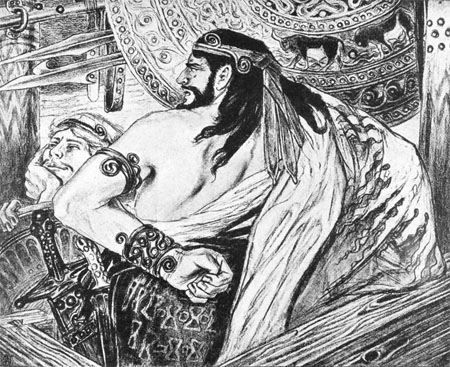
Curious fact - Wyspia%C5%84ski (b. 1869) was part of an eclectic group of artists/architects/illustrators born between 1867-1869, all of whom had eclectic careers, and the only thing they had in common was that they all made some mark on the art of stained glass. The others include Frank Lloyd Wright (b. 1867), Johan Thorn Prikker (b. 1868), Charles Rennie Mackintosh (b. 1868), and Henri Matisse (b. 1869). Did someone say the word 'Zietgeist'?
Krakow Franciscan Church
Various links related to the Crakow Franciscan Church
Chuck LaChiaso's take on the Crakow Franciscan Church
more interior shots of The Franciscan Basilica, Krakow
Wyspiański on Kracow: The City of Artists
krakow.pl.com features more general information on Wyspiański.
Pavilion Wyspiański, Kracow
The stained glass windows of Wyspiański's design St. Stanislaus of Szczepanów, Henry II the Pious and Casimir III the Great, designed for the Wawel Cathedral, only saw light of day in the windows of the Pavilion Wyspiański 2000, founded by the City of Krakow and opened to the public in 2007.
Wajda’s concept assumed that the façade of the building could make use of Stanisław Wyspiański’s three stained-glass works presenting St Stanislaus, Prince Henry the Pious (Henryk Pobożny), and King Casimir the Great (Kazimierz Wielki), which the artist had designed for Wawel Cathedral in a project that was never implemented.
Naturally, Wajda’s idea became the subject of disputes that questioned, for example, the sombre and eschatological climate of the proposed stained-glass decoration. The Saint and the Prince are presented at the moments of their death, while the image of the King – the bare skull wearing the Royal Crown – is what Wyspiański saw after opening the King’s coffin 600 years after his death.

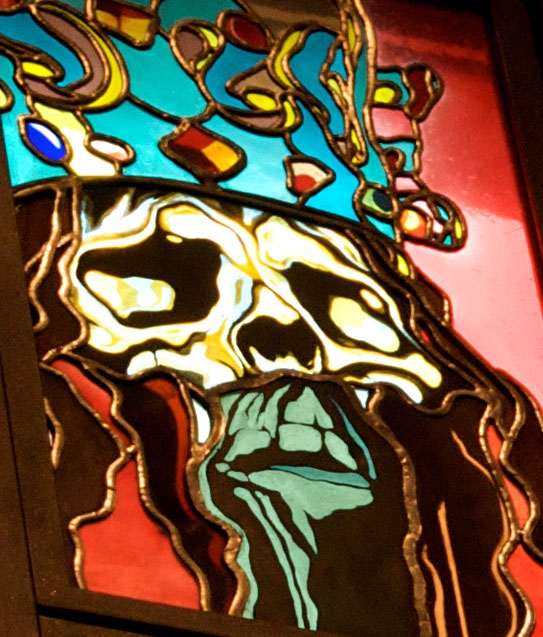
I have some more details of this window that I will post as I have time...
